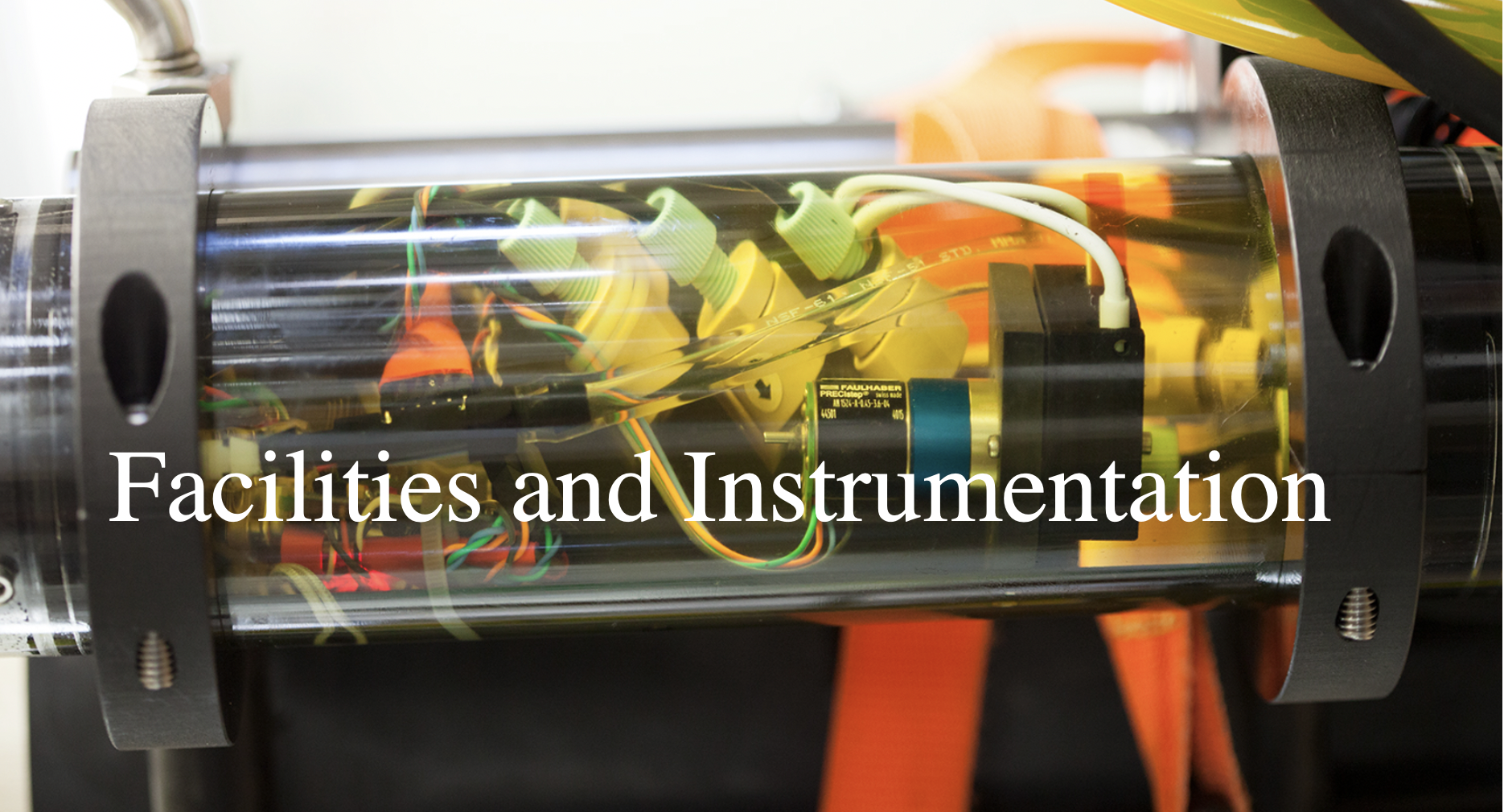
The Hansel laboratory space is in the Watson building on the WHOI Quissett campus and is tooled for both biological and chemical studies of metal and ROS biogeochemistry. See at the bottom of the page for a list of basic instrumentation.
major instruments
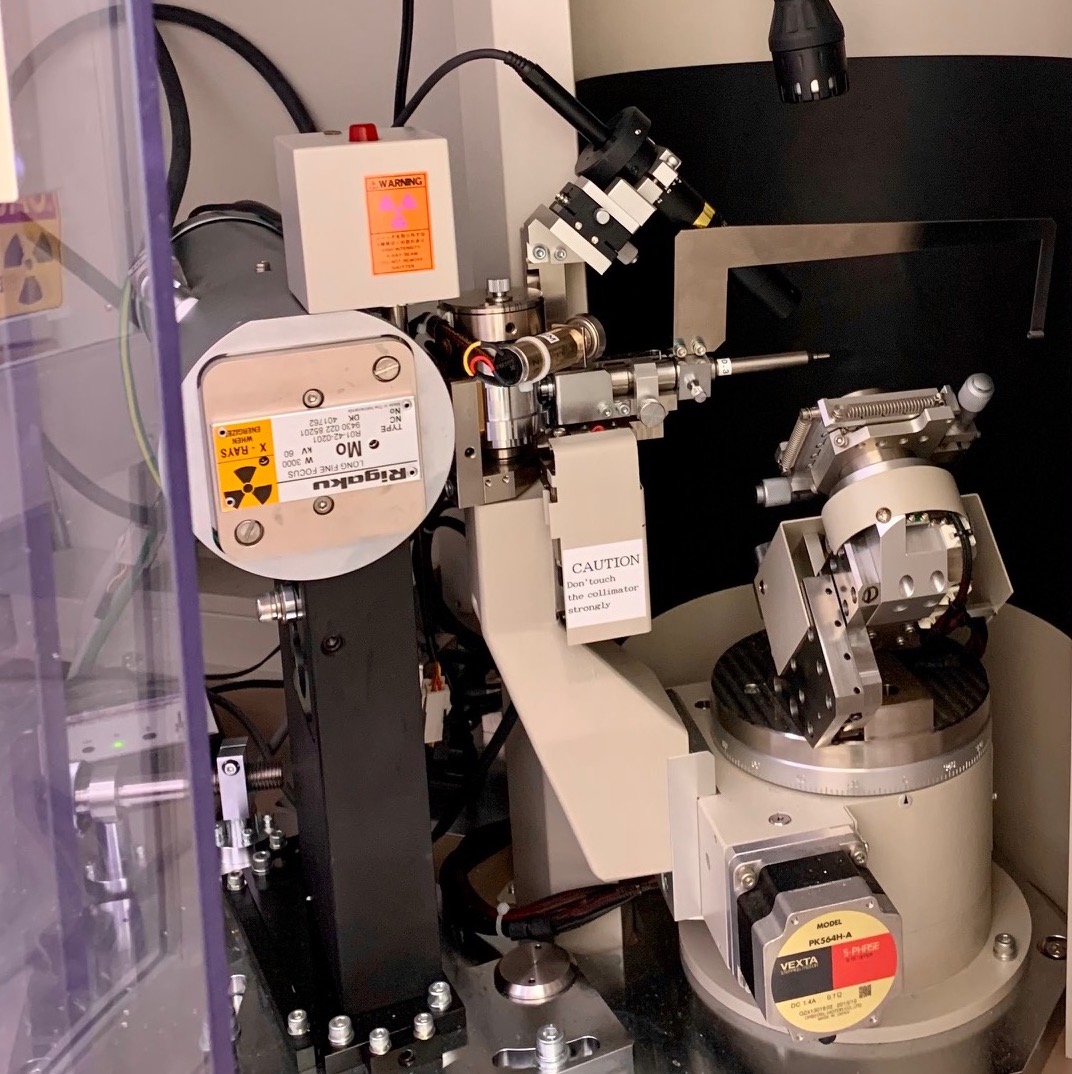
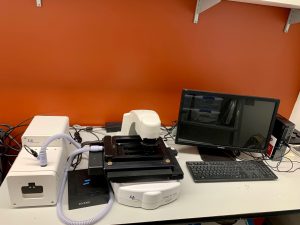
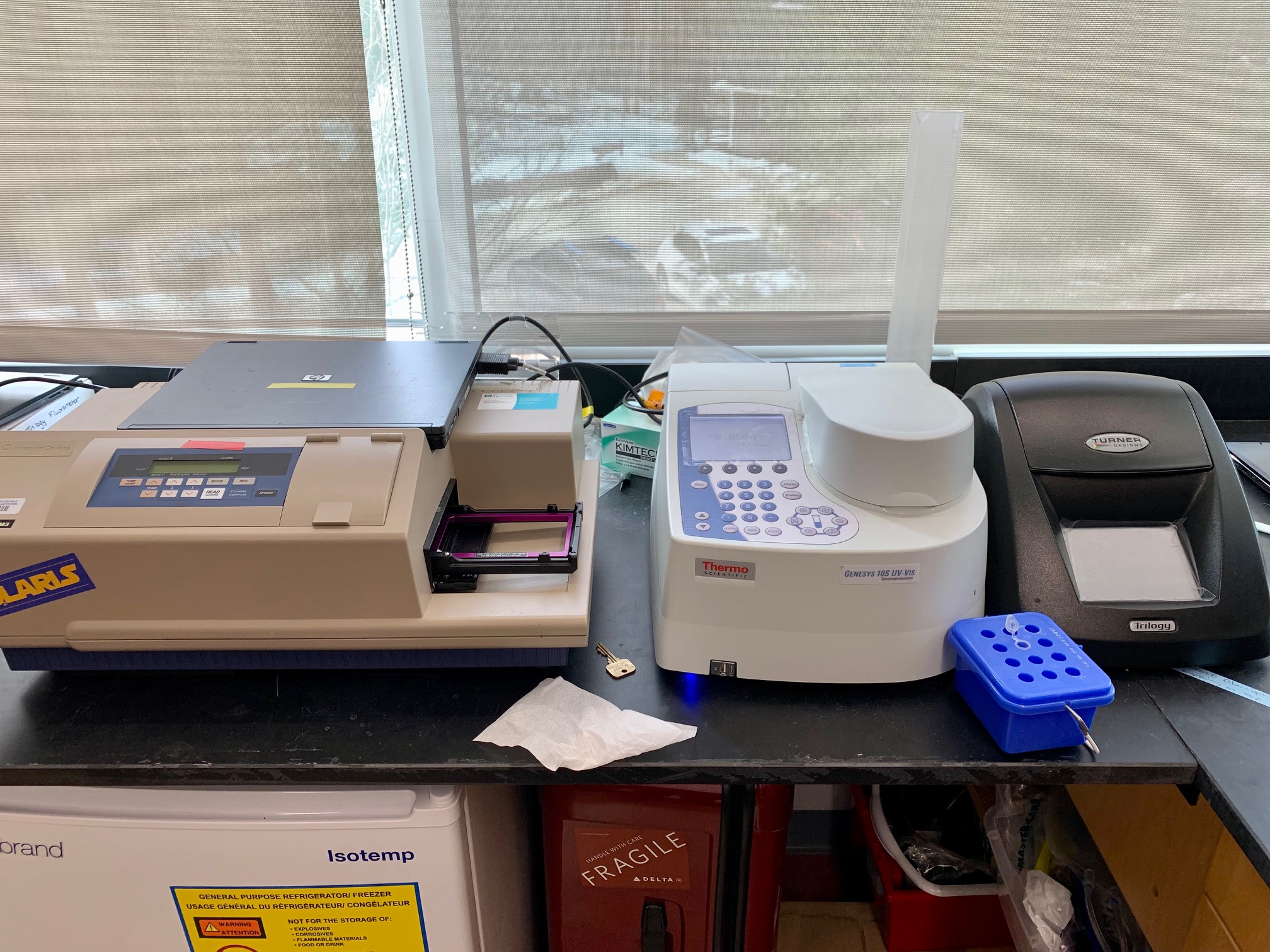
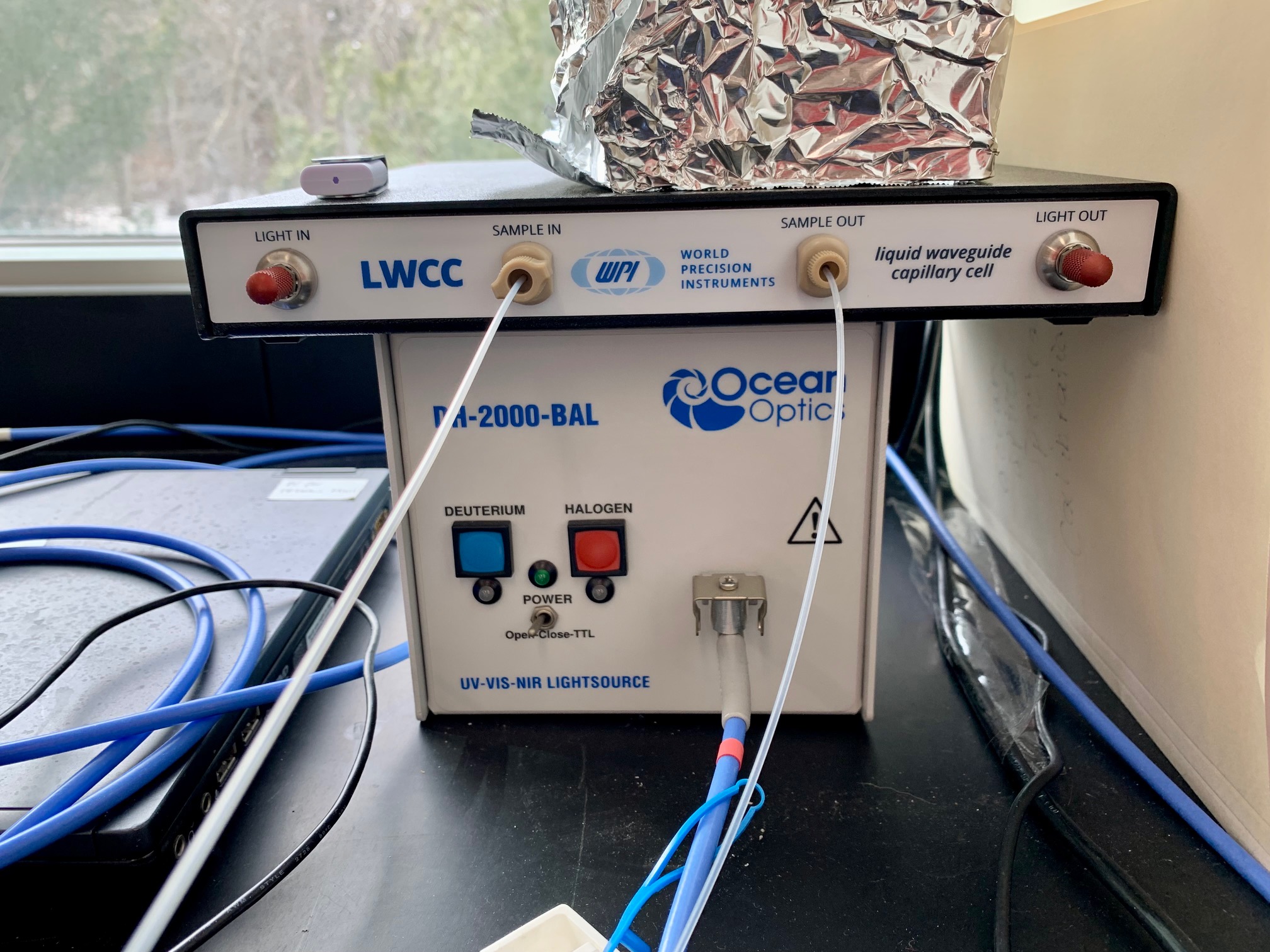
X-ray Diffractometer
We have a Rigaku Rapid II X-ray micro-diffractometer (m-XRD) with both Mo and Cu X-ray sources for characterizing a wide range of minerals. The stage can accommodate various sample holders, including capillaries, single mounts, and thin sections. XRD analysis is supported by an ongoing subscription to PDXL for peak matching and quantification.
FL Auto EVOS Fluorescent Microscope
The microscope has a variety of standard fluorescence cubes as well as a custom cube for optimal visualization of chlorphyll. The microscope also has a gas tight incubation chamber for conducting and real time monitoring microbial activity and growth.
Chemiluminescence Systems
The lab hosts a Molecular Devices SpectraMax M3 microplate reader and two FeLume Mini flow injection benchtop instruments (Waterville Analytical) for measuring chemicals via chemiluminescent detection.
Long Pathlength UV-VIS Spectrophotometer
The lab hosts a 1-100 cm liquid waveguide capillary cell (World Precision Instruments) coupled with an Ocean Optics UV/Vis spectrophotometer in which a mini deuterium halogen light source (DT-Mini-2-GS) is coupled with a USB2000+ fiber optic spectrometer, controlled with SpectraSuite software
developed instruments
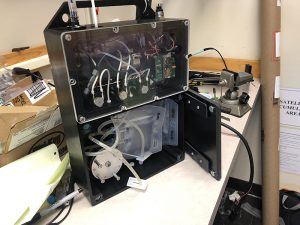
DISCO
In collaboration with engineers at WHOI, the Hansel lab has developed the first submersible chemiluminescent sensor – DISCO. DISCO has a touch tablet interface and real-time signal feedback. It is rated to 30 m.
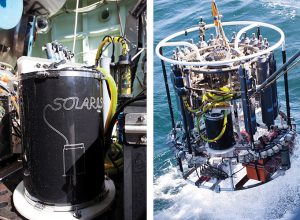
SOLARIS
Using DISCO as a springboard, our team of scientists and engineers expanded this technology to have an integrated calibration module, the ability to run autonomously or via remote communication, and an expanded depth rating to 4500m.
other
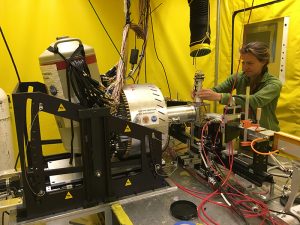
Stanford Synchrotron Radiation Lightsource (SSRL). The Hansel lab is actively and frequently involved in analysis and experimentation at SSRL. In particular, we perform X-ray absorption spectroscopy (XAS) and fluorescence microscopy (XRF) at SSRL. Beamtime is made available through general user proposals granted to C. Hansel (a user at SSRL for over 20 years). PI Hansel currently has active user proposals at SSRL, including beamlines low and high energy micro-XRF (2-3, 14-3) and XAS (4-1, 4-3, 11-2). The Hansel laboratory also has all of the data analysis components for XAS/XRF analysis, including the computer programs FEFF7, SixPACK, and SMAK.
Basic instruments include pH meters, balances, Beckman centrifuge, Eppendorf microcentrifuge, low-flow and high-flow high accuracy Ismatec pumps, microfiltration systems, auto dispensers and diluters, shakers, chemical flow hoods, a Coy anaerobic chamber, a gassing station, refrigerators, and a -80°C freezer. Microbial analysis is supported by various incubators, a steam autoclave, a laminar flow hood, Air Clean PCR workstations, a Biorad CFX96 Touch real-time PCR thermal cycler, an Invitrogen Qubit, Bio-rad sub cell and mini-Protean tetra cell systems, Pelicon 2 Mini and Pelicon 2 Maxi tangential flow filtration systems (TFF), gel documentation systems, and custom-built metal-free water jacketed chemostats. Major geochemical instrumentation includes an Ocean Optics O2 sensor, a Varian Cary 50 UV-Vis spectrophotometer outfitted with both a fiber optic sensor and an integrated flow cell, and a Dionex ICS-2000 Ion Chromatograph.